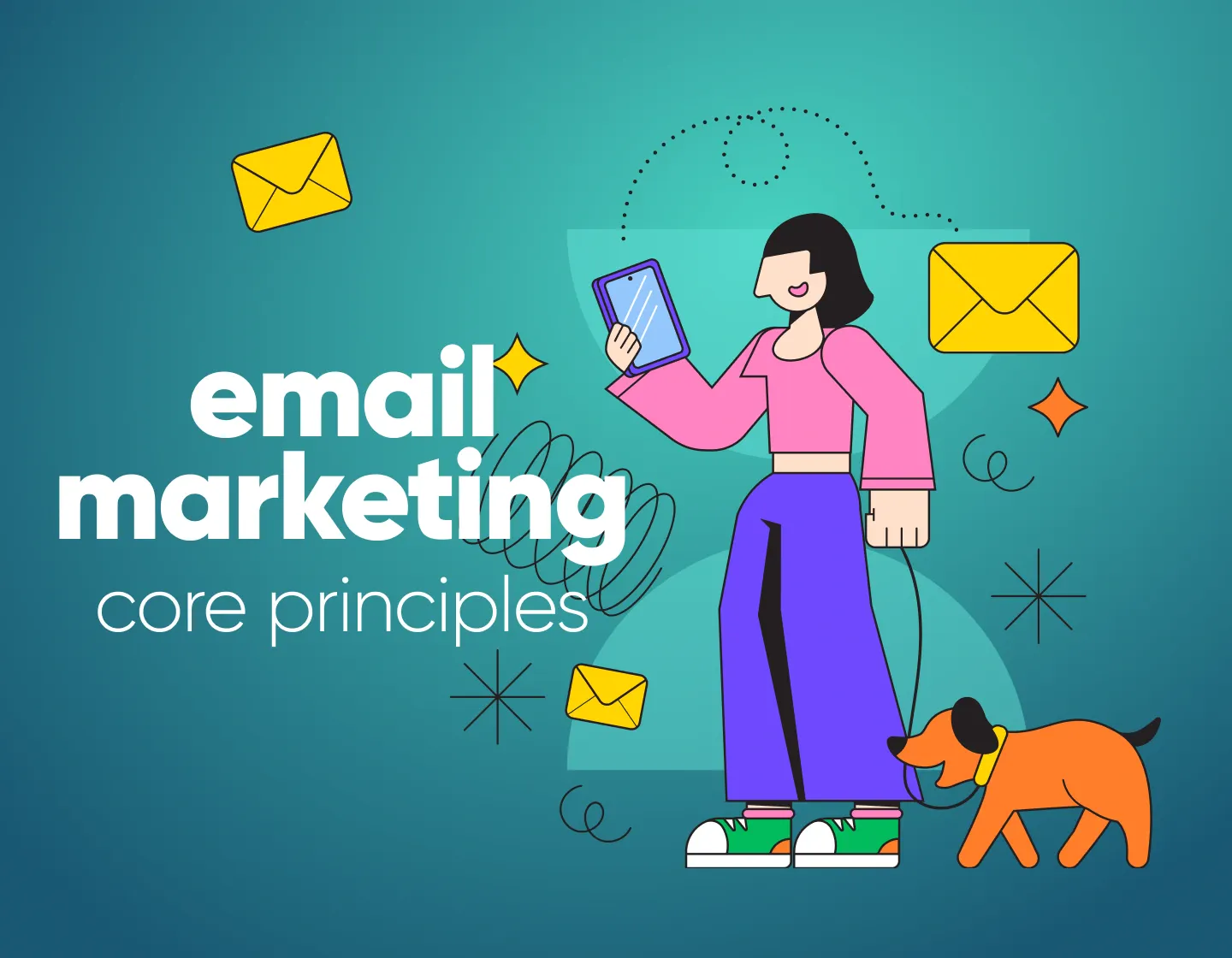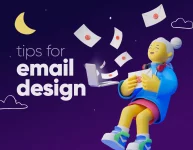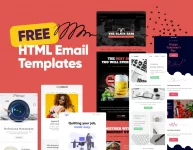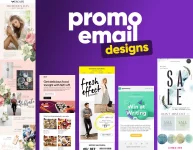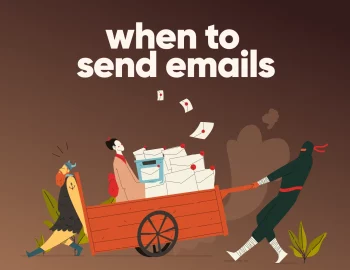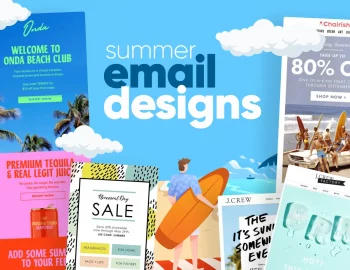I think we can all agree that email marketing doesn’t always get the love it deserves. It’s not flashy like a rebrand or as exciting as a homepage redesign. But when done right? Email can be one of the most powerful creative tools in your kit. I’ve seen beautifully crafted emails build real connections, boost conversions, turn visitors into buyers, and make clients say, “Wow, that worked.”
The tricky part is knowing what actually matters. What are the principles that make the difference between a forgettable email and one that performs like magic? That’s what we’re getting into here.
In this article, I’m sharing 8 core principles I come back to again and again, things like making emails easy to digest, optimizing for every screen, blending copy with design, and sending with strategy. Think of it as a little creative reset for your next campaign.
🎯 One Clear Goal in Mind
When you start drafting your email, ask yourself: what’s the one thing you want the reader to do after reading it? Is it clicking a link? Signing up for something? Downloading a resource? A great email campaign doesn’t try to do everything at once – it focuses on one single action that drives results.
I think it’s important to keep this goal top of mind throughout the process, from the subject line to the call to action. If the email feels like it’s asking too much or trying to cover too many bases, your audience will get lost. Keep it simple and guide them smoothly to the one thing you want them to do.
📖 Easy to Read Email
Your audience is busy and if someone can’t quickly understand the key message of your email in under 10 seconds, you’ve lost them. Therefore, you need to make your emails effortless to skim. Break up text into digestible chunks with clear headings, bullet points, and enough white space to keep things visually light.
Don’t forget the importance of font choices, too. Stick to legible, web-friendly fonts and use size and contrast to emphasize key points. The simpler and cleaner you keep it, the better. The goal is for your email to feel as easy to read as possible, whether they’re reading it on a laptop, phone, or tablet.
🎨✍️ Design and Copy Working Together
When design and copy work hand-in-hand, the whole email feels like it was crafted for one purpose – to connect. The way I see it, great design should look pretty, but most importantly, it should help deliver the message clearly. And on the flip side, copy should guide the reader’s eye through the design, from start to finish.
I think it’s always a good idea to create both elements at the same time, rather than working in isolation. That way, your visuals and words are reinforcing each other, not competing for attention. Whether it’s the layout, color choices, or typography, everything should feel intentional and support the message you’re trying to send.
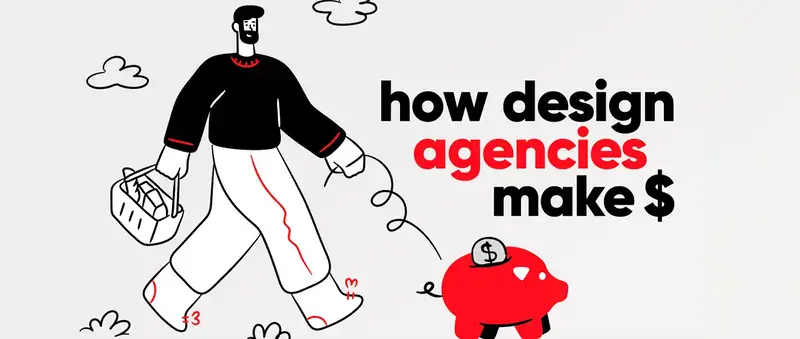
📱Design for Every Screen
We’ve all opened a beautiful email on our phone, only to find that half the text is cut off or the images won’t load. Keep in mind, you may only have one chance to impress a new subscriber, so this is not a great look and should not happen. Responsive design isn’t just a tech checkbox anymore – it’s a baseline expectation. Your emails should look polished and perform well across mobile, tablet, and desktop.
I always recommend testing how your layout behaves in different inboxes before hitting send. Prioritize mobile-friendly layouts, make buttons big enough to tap, and keep file sizes light. If your design breaks on a small screen, your message probably will too.
🤝 Keep Your Promises
Your subject line, preview text, and signup form all make a promise, so your email better follow through. If someone gives you their contact info for a free guide or a weekly newsletter, that’s what they should get. Sending something totally different (e.g., surprise sales pitch) breaks trust, and once that’s gone, it’s tough to earn back.
Delivering on your word isn’t just a nice-to-have – it’s the foundation of a respectful relationship. It shows your subscribers that you value their time and attention. I always suggest giving people control over what they receive and honoring their preferences. When you’re consistent and transparent, subscribers feel safe sticking around and are way more likely to become loyal clients.
🧑🦲 Be Approachable
People connect with people, not faceless brands. I don’t like talking to a robot, and I’m sure neither do you, especially not in your inbox. If your emails sound stiff or come from a “noreply@” address, it sends a clear signal: don’t talk to us. That’s not the vibe you want if you’re building relationships.
Instead, make your emails feel like they’re coming from a real person. I’m a big believer in ditching “no-reply” emails and giving subscribers a way to respond. I like using simple, friendly sender names like “team@” or even “molly@” (yes, made-up people work too!). When your audience knows they can actually reach out and hear back, they’re way more likely to trust you and eventually buy from you.
🔑 Personalization with Purpose
Gone are the days when one email worked for everyone. Your subscribers have different needs, goals, and levels of interest, and your emails should reflect that. This is why I think segmentation is so crucial. It lets you tailor messages to specific groups, making every email feel more relevant, more thoughtful, and way more effective.
I like to think of it as respectful email marketing. When you take the time to understand who your reader is and what they care about, your emails instantly feel more thoughtful. Segment your list, tailor your message, and always ask: Would I open this if it landed in my inbox? If the answer’s yes, you’re doing it right.
🛠️ Testing Before Sending
Even the most beautifully designed email can fall flat if a button’s broken, an image doesn’t load, or the layout looks off on mobile. That’s why testing isn’t optional, it’s essential. A quick check can save you from a lot of facepalms (and unsubscribes 😬).
I always recommend sending test emails to yourself and your team, checking across devices and inboxes. And don’t forget A/B and split testing, as it’s one of the easiest ways to learn what actually works. Try testing subject lines, CTAs, layouts, and even send times. Sometimes the smallest tweak makes the biggest difference. Think of testing as your safety net and your secret weapon.
➡️ Tips for Creating Engaging, High-Performing Emails
To summarize, keep these tips in mind as you create your next campaign. These are simple yet powerful ways to boost your email’s performance, engagement, and ultimately, your results.
- Keep it clear and focused – every email should have one clear goal, whether that’s driving a click, getting a reply, or simply providing value.
- Use compelling CTAs – make your calls to action stand out, and give people a reason to click right away.
- Leverage segmentation – tailor your messages to specific groups based on their behaviors and interests. It’s all about relevance!
- Optimize for mobile – more people open emails on their phones than desktops, so your design needs to look flawless on any screen.
- Test, test, test – don’t guess; test subject lines, images, and send times to see what works best for your audience.
✨ Bonus: Tools to Help You Step Up Your Email Game
Here are a few tools I swear by to make email marketing a whole lot easier and more effective:
- Litmus or Email on Acid – These are lifesavers for testing how your emails look on different devices, email clients, and browsers. You definitely want to make sure your email looks great everywhere, right?
- OptinMonster or Mailchimp – If you’re not already A/B testing, you’re missing out. These tools let you test everything from subject lines to CTAs, so you can see exactly what your audience responds to.
- HubSpot – It’s a fantastic tool for automating email workflows and segmenting your audience. That way, you can send the right message to the right person at the right time.
- Canva or Adobe Spark – These tools are perfect for creating gorgeous email visuals, even if you don’t have a full-time designer on your team. Easy to use, but with professional results.
Final Thoughts
Email marketing doesn’t have to be complicated, but it does need to be thoughtful. By keeping things clear, relevant, and personal, you can build stronger relationships with your audience and drive real results. Keep testing, keep optimizing, and most importantly, keep delivering value.
If you focus on these core principles, you’ll not only create more engaging emails but also foster trust with your subscribers. The best part? Every campaign is a chance to learn and improve. So don’t be afraid to try new things and always keep your audience in mind.
Ready to take your email marketing to the next level? I’m confident you’ve got this!


